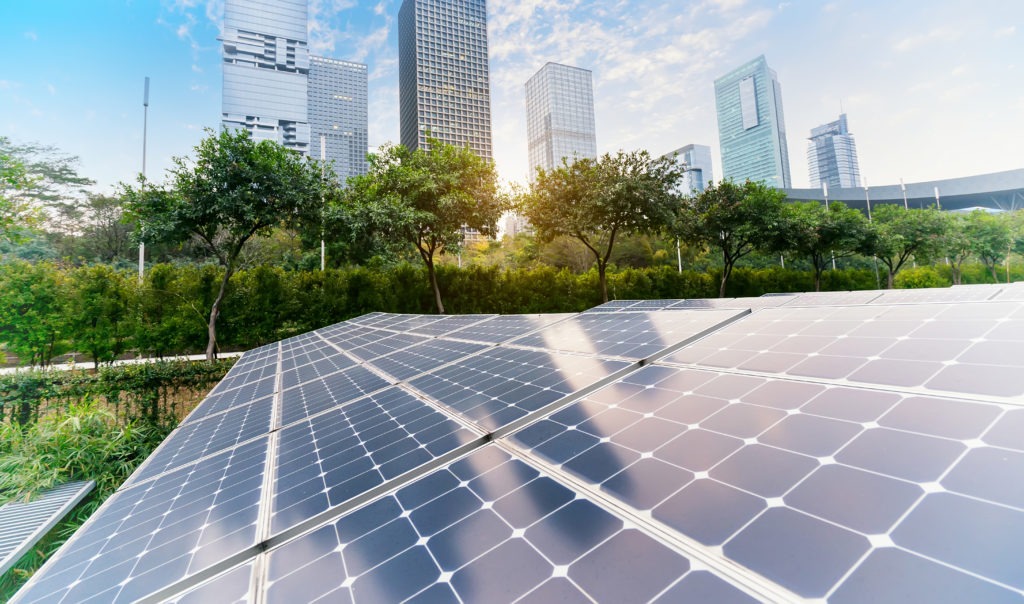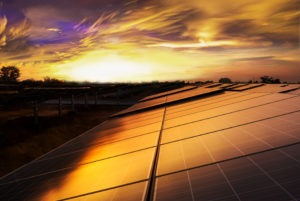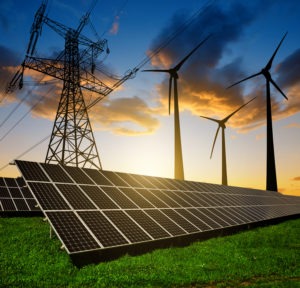
States are the “laboratories of democracy,” United States Supreme Court Justice Louis Brandeis said, where citizens can “try novel social and economic experiments.” True to form, American states — and especially cities — are trailblazing new policies that jettison climate-altering fossil fuels for environmentally responsible energy choices.
One of the most notable trends is remarkable for its boldness: a commitment to getting every bit of a city’s electrical supply from renewable sources, including hydropower, wind, and solar. Over the last three years, this movement for 100% renewable energy has caught fire around the country. At the municipal level, a major milestone was recently reached when the city council of Cincinnati voted in December 2018 to make the switch by 2035. This pledge made Cincinnati the 100th city in the United States to adopt the ambitious goal.
The third largest city in Ohio with around 300,000 residents, Cincinnati now joins its fellow Buckeye State’s Columbus, as well as metropolitan centers Atlanta, Denver, Milwaukee, Minneapolis, Orlando, Portland, Salt Lake City, San Diego, San Francisco, San Jose, and St. Louis in going all-in on renewable energy.
The Sierra Club, an Oakland, California-based environmental organization, has promoted the profound shift with the Ready For 100 campaign. Since the campaign launched in 2016, those 100 cities—plus 11 counties and a growing number of states—have committed to the cause. As a result, one in seven Americans—or nearly 50 million people—now lives in a jurisdiction with its sights set on energizing healthily for the planet’s sake.
“We have helped build a strong, diverse movement of residents, businesses, faith leaders, community groups, and city leaders all across the country who are calling for 100% clean energy for 100% of the people,” wrote Ready For 100 Campaign Director Jodie Van Horn in a Sierra Club post marking Cincinnati’s milestone.
Better U.S. Energy with Sunlight
 Stemming the damage from climate change is the prime motivator for cities to switch to renewables. But there are other reasons to go 100% renewable, advocates point out. Namely: cutting down on overall energy costs. Solar energy — based on abundant, free, and in many regions, frequently available sunshine — is a case in point.
Stemming the damage from climate change is the prime motivator for cities to switch to renewables. But there are other reasons to go 100% renewable, advocates point out. Namely: cutting down on overall energy costs. Solar energy — based on abundant, free, and in many regions, frequently available sunshine — is a case in point.
“Clean energy’s environmental benefits of course play a significant role, but the often-underreported reason for the transition is economics,” said Abigail Ross Hopper, president and CEO of the Solar Energy Industries Association (SEIA), a Washington, D.C.-based trade association. “In many parts of the country, renewable energy, solar in particular, is now the most cost-effective option.”
At this early stage of the 100% renewable movement, its energy sources’ contribution to the United States energy diet is small, and solar’s contribution smaller still. According to the Energy Information Administration‘s latest figures, solar photovoltaic (panels) contributes 1.2% of domestic energy. Fossil fuels, mainly coal and natural gas, make up the lion’s share of electricity generation at around 63%. Nuclear power chips in 20%, while the full suite of renewable sources including hydropower, wind, biomass, and solar round out the remaining 17%.
Solar has ample room to grow, though. “The solar trajectory is far from its pinnacle,” said Ross Hopper. “The U.S. solar market is projected to more than double in size within the next five years. Not many industries can say that.”
Community Solar’s Impact
 Community Solar, or what you can think of as offsite, roofless solar, looks to be a big part of meeting the 100% renewable movement’s stated goals. Rather than installing and maintaining solar panels on their property, Community Solar enables residents and businesses to subscribe to supporting an offsite solar farm. These sites, also called solar gardens in areas like Minnesota, enable homeowners, renters and business owners who prefer not to or are unable to install solar panels to support the benefits of solar. As more residents join local Community Solar farms, they are aiding the city and state renewable energy goals.
Community Solar, or what you can think of as offsite, roofless solar, looks to be a big part of meeting the 100% renewable movement’s stated goals. Rather than installing and maintaining solar panels on their property, Community Solar enables residents and businesses to subscribe to supporting an offsite solar farm. These sites, also called solar gardens in areas like Minnesota, enable homeowners, renters and business owners who prefer not to or are unable to install solar panels to support the benefits of solar. As more residents join local Community Solar farms, they are aiding the city and state renewable energy goals.
“Cities pledging to meet 100% carbon free or 100% renewable energy targets will help the proliferation of clean energy across the U.S., particularly in regions where clean-energy makes up a small part of local power generation,” said Colin Smith, a senior analyst with Wood Mackenzie Power & Renewables, a market intelligence firm. “We have seen instances where these pledges act as market catalysts. Utilities that might not evaluate or assess renewable energy sources are forced to either speed up their procurement timelines or start acquiring renewable power for the first time.”
Continuing the Momentum and Facing the Challenges
 As further evidence of the broad appeal of 100% renewable movement, green energy did well at the ballot box. The 2018 midterm elections saw around a dozen pro-clean-energy governors and many new lawmakers elected at the local and federal levels.
As further evidence of the broad appeal of 100% renewable movement, green energy did well at the ballot box. The 2018 midterm elections saw around a dozen pro-clean-energy governors and many new lawmakers elected at the local and federal levels.
“Voters are demanding their elected officials do the same,” said Ross Hopper. “The urgency to transition to a clean energy economy is only [getting] stronger.”
Despite all the progress in 100% renewable energy goals being set, the movement still has work ahead. Pledging to adopt 100% renewable energy, and actually realizing it are of course very different things. Governments, community leaders, and ultimately residents will need to maintain their expressed interest and commitment to fundamentally changing where their energy comes from if the 100% renewable movement now underway is recalled as era-defining zeitgeist or just another “greenwashing” fad.
“We’re just beginning,” said Ross Hopper. “A lot of education still needs to be done in the states and at the federal level on the benefits that expanded clean energy deployment brings communities nationwide.”









